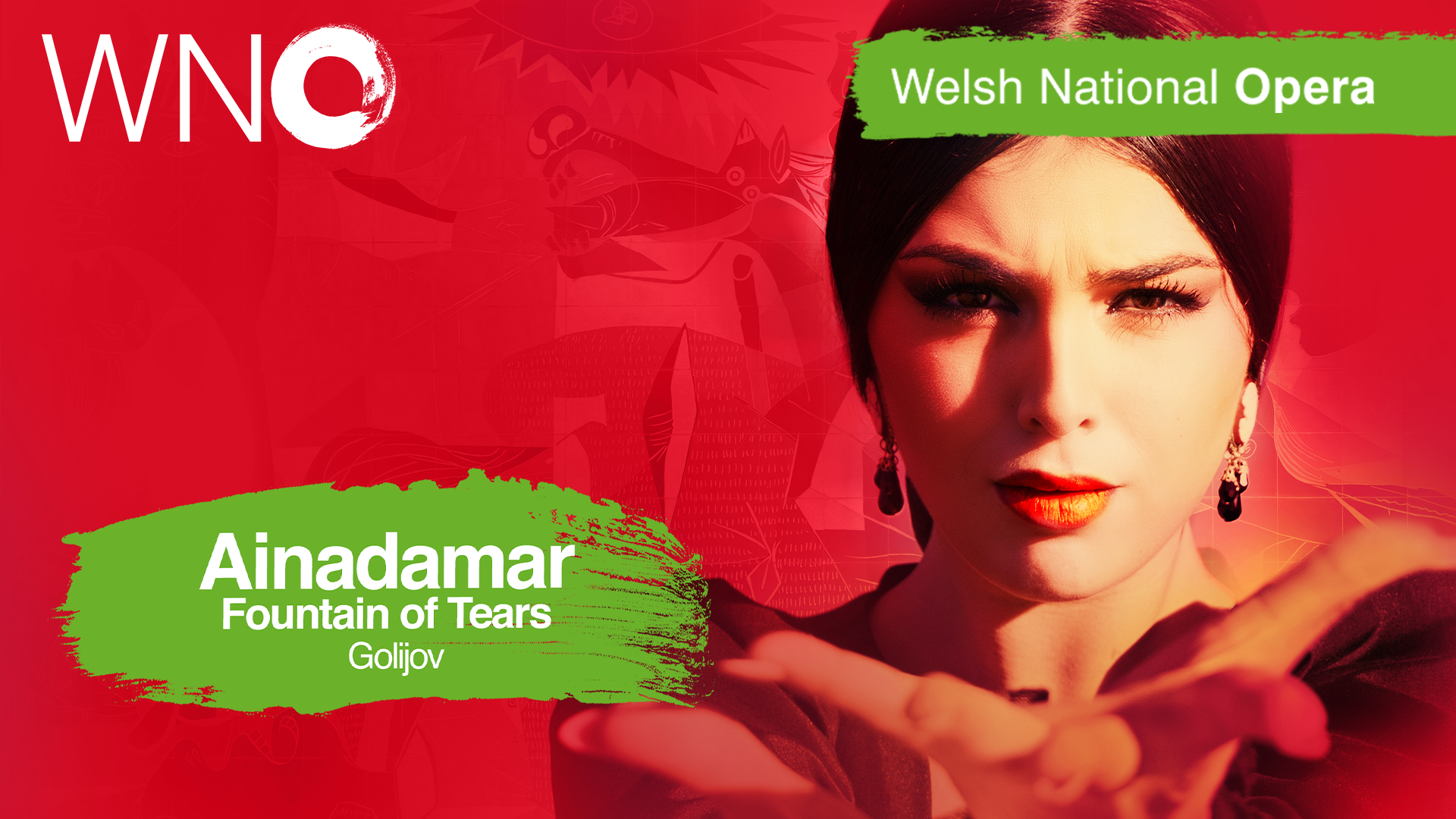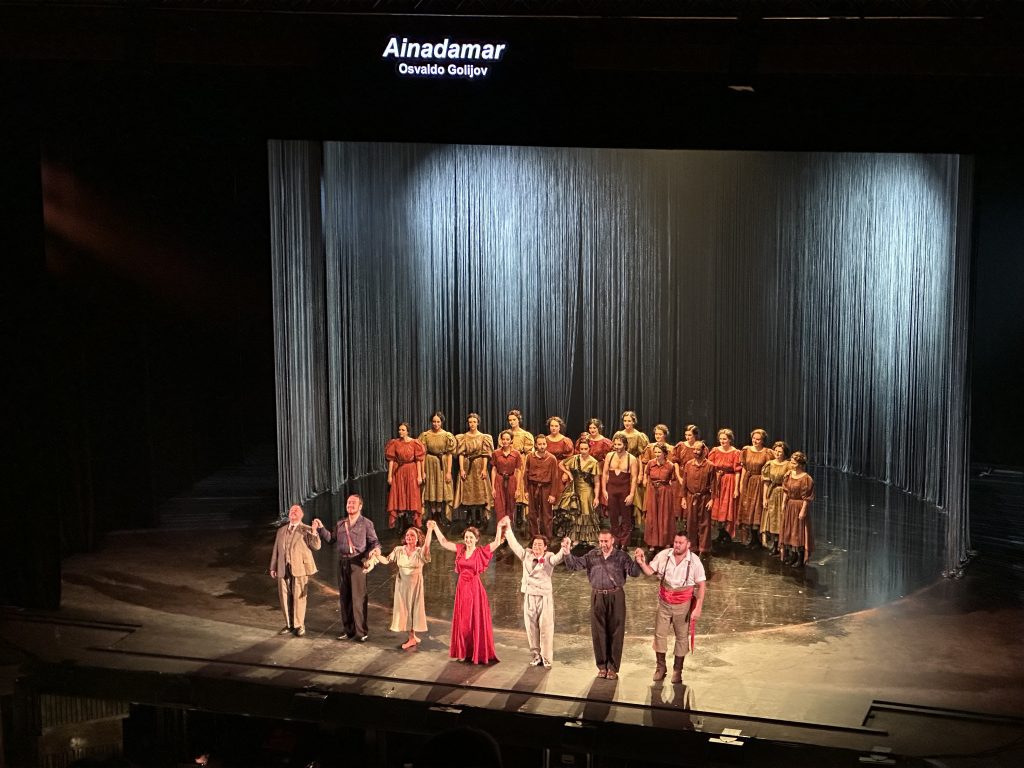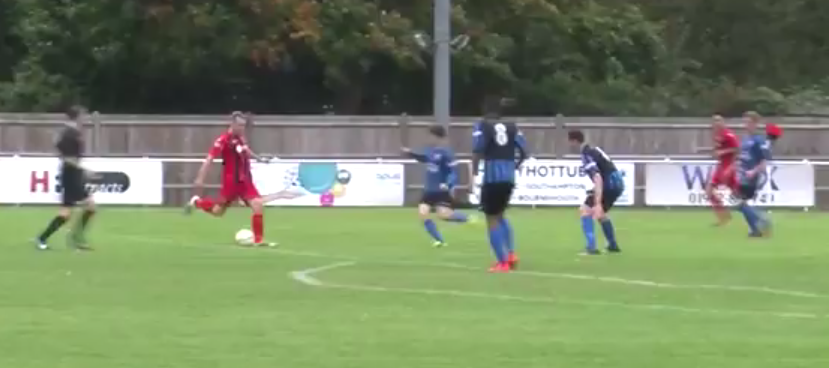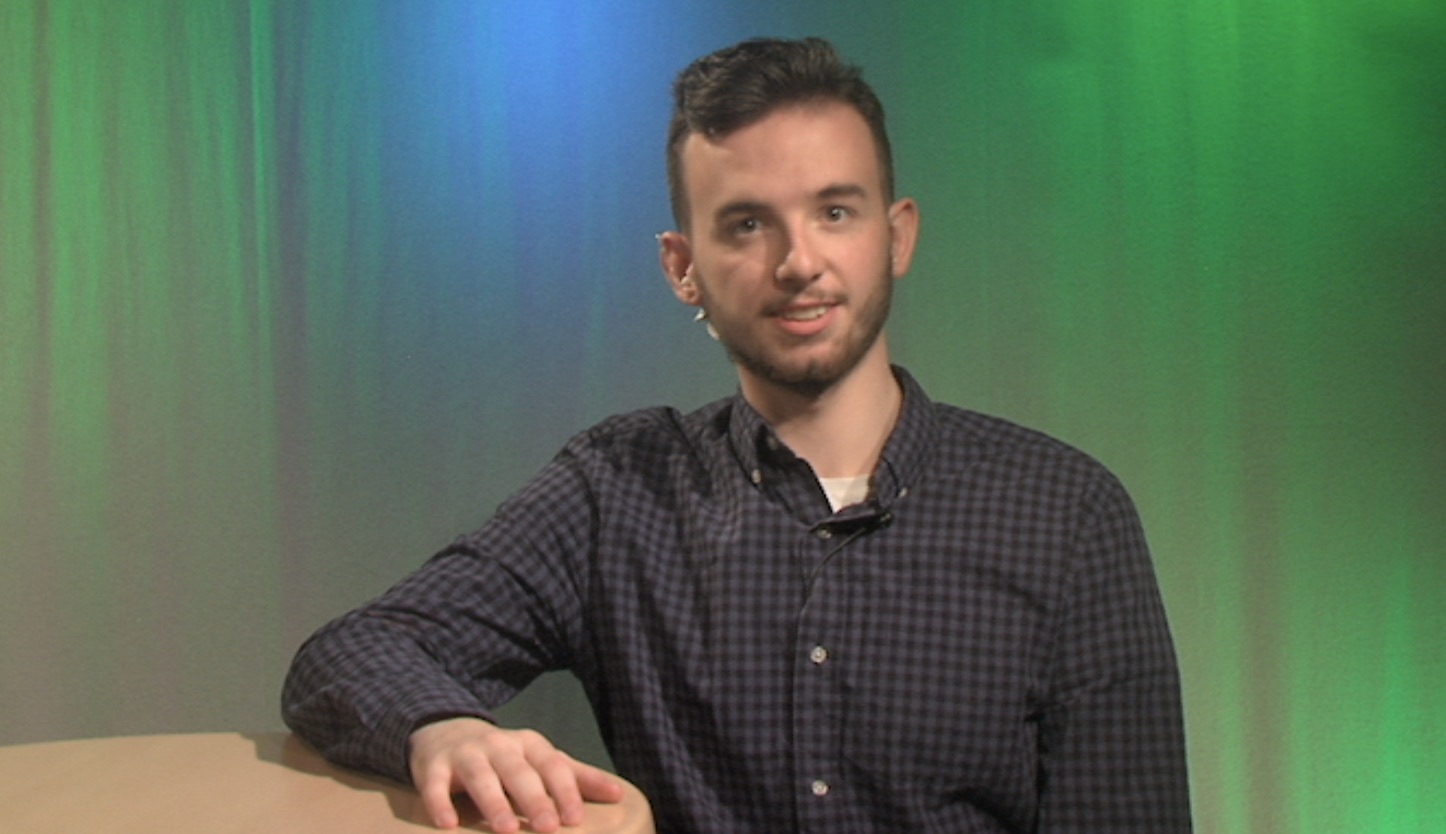Culture
REVIEW: WNO Ainadamar – Fountain of Tears at Mayflower Theatre

The Welsh National Opera was back at the Mayflower with their instalment of ‘Ainadamar’ by Osvaldo Golijov. This opera has a perfect balance of everything; music, dance and theatre – all coming together hand in hand to tell this powerfully poignant story. With full disclosure, I must say that this is actually my very first opera, and from what I saw tonight I can also say that it is hopefully my first of many. ‘Ainadamar’, which is Arabic for ‘Fountain of Tears’, is a two-time Grammy winning opera which uses a mixture of Spanish singing, flamenco dancing and poetic outbursts.
With this being my first opera, I was quite worried that the story would get lost and I would struggle to understand what was going on. This was absolutely not the case. The shifting of the music and production, really helps guide you through the story without being left behind. Director, ‘Deborah Colker’, has done a fantastic job by working with the whole company to make this so smooth.
‘Ainadamar’ (‘Fountain of Tears’), is the ancient well near Granada where Federico García Lorca (Spanish poet and playwright) was brutally executed during the Spanish civil war in 1936, after being branded as a ‘homosexual socialist’. This opera takes us through Lorca’s life via a flashback of memories from his muse, Margarita Xirgu, an actress. Xirgu now in her final moments, is wanting to pass on the hopes and passion of her generation onto one of her students, Nuria. Throughout the story, there’s lots of different tones that are portrayed – and the opera is non linear, meaning that the time frames do jump around. This again, could be quite confusing but the way WNO have put this piece together makes it so you can follow along with ease.
If you’re new to opera or have never even thought about going to see one, I can absolutely recommend Welsh National Opera
One thing I really liked was how the opera just continued to flow. The live orchestra, mixed with the superbly talented cast made the 1 hour and 20 minutes with no interval just fly by. At the end, I heard multiple people all saying, “that definitely didn’t feel like 80 minutes.” Can’t get much higher praise than that, time flies when you’re having fun – job well done! Jacquelina Livieri, who played the role of ‘Margarita Xirgu’, was just exceptional. Her vocals were fantastic and the way that she had the audience there with her on her every word was expertly done. Much the same has to be said about Julieth Lozano Rolong (Nuria). ‘Nuria’ is almost the voice of the audience on stage because she is being told Lorca’s story – just as we are in the audience – and the bond between herself and ‘Xirgu’ comes across so eloquently. Fantastic Job! I think I also need to mention Hanna Hip, who had the role of ‘Federico García Lorca’, as it goes without saying the vocals were flawless, but the way she brought a different edge to the character was so creative. Every single member of the cast brought a big level of energy to that stage – and the tone of the whole opera went with them. Amazing!
I’d also like to add, that with Hanna Hip playing ‘Lorca’ – the three main protagonists in the show were all played by females, even when one of their characters was male. This was incredibly refreshing. The majority of the cast was actually female and it seemed like the male figures in the opera were the oppressive authority in the story and the female figures were fighting against this to help remind us, “of the vital role the artist plays in championing freedom in all its forms” – Aidan Lang, General Director of WNO. That was a repeated theme throughout the opera, and a theme that really speaks to musical theatre now as it also did then.

This set was also extremely effective yet so simple. The main bulk of the set was a fringe like curtain in a round with four rectangular tables that would move to show different places/scenes. Every now and then you would have some drop downs of different fringe curtains, or wood like debris which when all put together were fantastic. I thought the way they stacked the tables to create almost a barricade was ingenious. The curtains were weirdly mesmerising. The way they would use light and projections together on the curtains was just beautiful. Also the way the cast would interact with the curtains to show either a ripple effect, a doorway, or pinning it back showing us what was happening inside – just amazing. Something so simple, with such an impact. I also liked how you could still see through the curtain and the projections would be used to help tell certain parts of the story. Designers, Jon Bausor (stage), Paul Keogan (lighting), and Tap Rosner (projection) have all done a brilliant job at intertwining their work to create a literal masterpiece!
WNO tour the UK with multiple different operas/operatic experiences and if they are coming to a theatre near you – I think you’d be silly to miss them.
When it comes to the music – WOW. It wouldn’t be an opera without a stunning orchestra. I’ve already mentioned how amazing the vocals were from the whole cast, but the accompaniment of WNO’s orchestra made it that much more meaningful. The mixture of classical music with Spanish, Arabic and Jewish influences alongside the rhythms of Cuba and the flamenco were again, a big help in shifting the tempo of the opera and helping the story progress further. I particularly liked when at the start of one the early flashbacks, we see a couple of the musicians on stage playing classical, up tempo, Spanish music with a cajon drum and guitar. At that moment, the music wasn’t a separate entity to the theatre, it was its own specific role that was interacting within the scene. A fine detail that really helped in polishing a complex story.
If you’re new to opera or have never even thought about going to see one, I can absolutely recommend ‘Welsh National Opera’. The production values and cast are superb and from what I thought would be an intimidating night at the theatre, turned out to be another show that I would happily go and watch again. All WNO operas are presented with English surtitles to help you follow the story with even more ease. If you do consider going to see an opera, my top tip would be to do a little bit of research on the general story, just to help yourself understand what is going on. This way when it comes to watching the show, you can sit back and enjoy without worrying too much that you may misunderstand something. WNO tour the UK with multiple different operas/operatic experiences and if they are coming to a theatre near you – I think you’d be silly to miss them.
Culture
Where confidence takes centre stage: How theatre transforms

Performing arts education isn’t just about learning to act, dance, or sing – it’s vital in developing many young people’s confidence and self-expression.
In a digital age where young people are spending more time on their devices than ever before, theatre education provides lifelong skills like communication, resilience and teamwork.
I caught up with some of the students at Artisan Theatre School, a Hampshire based youth theatre club, to see if this rings true.
Ben, 18, said his time at theatre school has “helped develop people skills” and made him “a more confident person”.
He urged other young people to “get involved and enjoy it!”
Daniel, 17, shared a similar sentiment saying his “confidence has grown a lot”.
Theatre education can open a whole world of new opportunities for young people, giving them the space to discover their talents and explore future career paths.
Lucy, 17, has attended Artisan Theatre School for nine years and said: “I want to be a performer in some capacity.”
She added: “That’s my dream because of Artisan.”
Emma, a singing teacher at the school, said performing arts education is “beneficial to anyone,” not just those pursuing it professionally.
She added it can be especially valuable for children with SEN, helping them build confidence, improve communication, and “come out of their shell” in a supportive environment.
Unfortunately, despite its benefits, arts education is not guaranteed for every young person.
Cuts to funding over the last decade has had a significant impact, limiting access to creative learning opportunities.
The Cultural Learning Alliance’s 2025 report reveals a 42% decrease in Creative Arts based GCSE entries since 2010, and a 27% decline in the number of Arts teachers.
Sam Blackwell, principal and founder of Artisan Theatre School, said arts education is “really important” and that “they don’t do enough of it in schools”.
She explained that her vision in creating the school was to “give back more to kids and get them being confident”.
To help fill the gaps left by reduced arts provision in schools, Sam plans to introduce additional classes and offer increased opportunities for her students to learn from industry professionals.
Culture
And we all keep dancing for it can’t get any worse (90s/00s)

The Shakespearean nature of Tony Blair’s time as Prime Minister is something that had never been seen and his obsession with “the spin” that had won him the 1997 election and made him one of the most popular prime ministers when entering office.
With large proportions of the public optimistic for his premiership incoming.
A fall from grace would ensue much like Macbeth.
It would be cruel and untrue to reflect on Tony Blair’s premiership to say that it was a complete failure, especially as many still see him as one of the best PMs the UK has ever had.
Since one of the biggest landslides in UK election history in 1997, he was able to push through many socialist policies without much of a hassle: inflation was low, crime was down by a third, children were achieving some of their highest results ever in school, thousands more students were going to university, a million pensioners and three million children had been taken out of poverty, the quality of the air, beaches, and drinking water was as clean as before the industrial revolution.
However 9/11 changed everything. The era of youthful optimism and rebellion has been replaced by what a lot of thinkers call post-post modernism.
At site Zero, George Bush claimed that “those who are responsible must be brought to justice.”
He outlined Cuba, Iran, Libya, Syria, North Korea and most importantly Iraq.
Once the troops stepped into Iraq, it was the start of a domino effect that quickly decimated Blair’s time as PM.
Unlike Kosovo and Sierra Leone, Britain’s involvement in Iraq did not have the public’s support.
In his book The Prime Ministers, Steve Richards remarks that Tony Blair had not assumed any cabinet position in the lead up to his premiership and asks:”What if Blair had been foreign secretary? at least he would’ve seen, and interpreted intelligence – an explosively contentious issue in the run-up to the Iraq War.”
And then, the day after London had been announced as the host of the 2012 Olympics, on the 6th of July 2005, 7/7 happened.
Four terrorists detonated bombs on public transport – 52 killed and 784 were injured.
When times get tougher and life gets sadder, what do people do? Dance to forget
Prince William and Kate were leaving a Chelsea nightclub at 3am, Prince Harry was partying with Kanye West and getting into a scuffle with photographers at 4am.
The 2000s club scene was here and everyone was taking part; it was loud, it was abrasive, and it was here to stay.
Since the introduction of the stifling 1994 Criminal Justice Act, which is considered to have brought the illegal rave era largely to a close, “free parties” were the new get-around of the law: Student clubs offering “buy one, get three free” on alcopops and 50p doubles for an hour.
Halls bars were £1.20 a pint. Artists like LCD Soundsystem, Missy Elliot and Rihanna began their rise to fame with dirty, booming soundscapes that captured the drug-fuelled atmosphere of clubs as everyone dances to a beat that never seems to end, drenched in sweat.
Films like Trainspotting capture the allure of 2000s clubbing but the grim reality, drugs have found their way into the club scene.
Much like the Oasis album Standing on the Shoulder of Giants is described as Oasis’ “come down album”, the 2000s was a comedown era of clubbing.
The times were sad, but the music got louder?
As David Cameron’s government entered Number 10 Downing Street in 2010 and ushered in 14 years of austerity, where exactly would clubbing culture go with almost all clubs closing….
Culture
REVIEW: Sigrid – There’s Always More That I Could Say

2 out of 5 stars
A disappointing third album filled with negativity
In all honesty, I was late to Sigrid’s party.
I started following the Norwegian pop star in 2023 when she had already released two albums and completed a slew of EPs and international tours.
In no time at all, I was captivated by her rasping tones, funky rhythms, and cool electronic synths.
When news broke that her third album would be releasing on 24 October, it was no surprise to find myself listening and assessing it…
Jellyfish is the first single and the most lighthearted. I like it.
It’s a nice story about two people meeting at a dance and kindling a relationship.
Sigrid sings in a syncopated rhythm, giving a jazzy tone to the tune.
For the first time in her career, she includes a flute.
Cold, gritty, grim
It plays a flourish at the beginning but I can’t hear it throughout the rest of the track. It would be good to hear more of the flute in future.
Fort Knox is single number two. As the name suggests, this is a cold, gritty, grim song about a woman betrayed by her man.
This betrayal cuts so deep that she has retreated into her shell to “lock my love up in… Fort Knox”.
I enjoyed the dramatic, dark nature here, especially the war cry chorus throughout the song.
Towards the end, you would think the song has finished before it plays one more crescendo of strings to cap things off. I thought that was unnecessary.
The third single, Two Years, is written from the perspective of the woman’s boyfriend, another new departure for Sigrid.
He has been chasing for that exact period of time. It’s a cheery song with a strong beat, despite the desperate lyrics like: “What are you running from? / Why did you let me go?”
I’ll Always Be Your Girl is another sad song of frustration and heartache caused by a rowdy, hot-headed partner.
It is sung very well, especially the pleading chorus line, and the drum-guitar combination gives me something to nod along to.
Unconventional energy
Do It Again is the most unremarkable song on the album.
There is a good guitar and drum track, however the story again is quite predictable for Sigrid (being tempted to rekindle on old flame relationship).
Kiss The Sky returns to more unconventional energy which is great.
A lovely fade into the track leads into the main verses.
This time, Sigrid is speaking her verses with a distorted effect rather than singing them. It sounds good and complements her natural raspiness.
A strong guitar riff carries us through the bridge. The electronic synths make this seem like a 1980s dance track.
It’s only the lyrics that make this song a story of disappointment between lovers.
There is sexual innuendo in Hush, Baby, Hurry Slowly.
You could interpret it as a man and woman deciding whether to move forward with their relationship.
You could see it as partners deciding whether to have sex or not.
As a result, it’s an interesting song and makes you listen to try and work it out.
The structure shakes things up by starting with the chorus fading in.
The song ends with the melody slowing down and lowering in pitch, reflecting the title in musical terms.
The title track is the obligatory solo piano song.
Sigrid has had at least one piano focused song in all albums.
This is the most beautiful song in the album, featuring solo piano and a nice resonance on the voice.
The lyrics still contain tensions between people, like “giving…my worst” as a girlfriend.
Nevertheless, this is my favourite song from this year’s collection.
The penultimate track is also the longest in the album.
Have You Heard This Song Before picks up the energy from the previous song with a predictable but welcome mix of drums and synths.
The lyrics are pretty hopeful in tone about wanting to spend time with your partner. This is the most positive track on the album.
The last song, Eternal Sunshine, is a conventional finale song.
It has a regular beat and instrumentation.
It is another song built out of frustration with a partner – she wants to “drink” him out of her mind.
It would have been nice to have something different to end on – maybe a different topic.
This is the shortest album Sigrid has released. That is disappointing.
There are 10 songs in only 31 minutes.
I would have expected the usual 12 tracks or more.
The previous albums managed it fine.
Sucker Punch (2019) and How To Let Go (2022) contained 12 songs. The Special Edition of How To Let Go added 15 songs on top of the originals.
This album differs from the last two in that every song but one is constantly loud, energetic, and pumping.
I would have preferred more balance between softer and pounding songs.
How To Let Go had more positivity in it, such as singing in a taxi, body-confidence in the mirror and making the most of life.
This album has replaced that with disappointment and frustration.
It is the album with the most “explicit” songs – never before have we had an album with so much swearing.
I hope that is toned down in future.
Here’s hoping that the next album is more positive, unconventional and creative.
Perhaps that will come out in three years, like the others.
There’s always more that Sigrid could say (sorry, that was a terrible joke).
-

 Football9 years ago
Football9 years agoFootball – Winchester City vs Didcot Town
-

 Community9 years ago
Community9 years agoWinnall community association renovated
-
Community8 years ago
Hampshire’s frontline services at risk
-

 Hampshire8 years ago
Hampshire8 years agoUniversity of Winchester Parking Trouble
-
Community8 years ago
Knight Bus unveiled at school
-

 Community8 years ago
Community8 years ago‘Controversial’ new plans take shape in Eastleigh
-

 Winchester News Online8 years ago
Winchester News Online8 years ago#MiracleMissy Update
-

 Bulletins7 years ago
Bulletins7 years agoWINOL 20 November 2018
